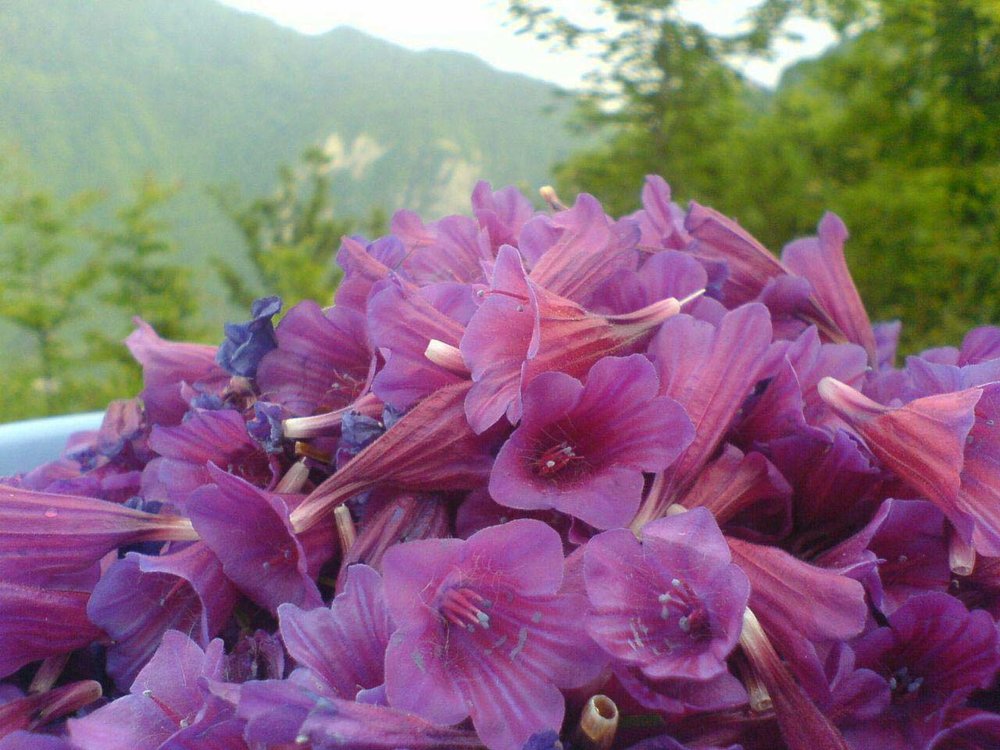Untapped potential: $450m annual exports of medicinal plants

TEHRAN – Exports of medicinal plants bring annually $450 million on average for Iran, however, the figure is low compared to the great potential of the medicinal plants market in the country, executive director of medicinal plants scheme affiliated to the Ministry of Agriculture, has said.
Every year some 25,000 tons of medicinal plants are exported on average but we hope to increase this amount by 10 times to unlock the potential of this market, ISNA news agency quoted Fariborz Gheibi as saying.
About 134 million hectares of Iran is covered by natural resources, including forests, pastures and deserts off which, 32 million hectares are deserts, Gheibi said, adding that there is a tremendous potential for cultivation of herbs in the country, except for deserts which biologically do not have herbaceous habitats.
Such herbal products can be used in various industries including food industry, he stated.
2,300 medicinal plant species in Iran
So far, some 8,000 plant species have been identified in the country, he mentioned, adding, according to the development of medicinal and aromatic plants and traditional medicine headquarters affiliated to the vice presidency for science and technology, there exists some 2,300 medicinal plant species in Iran.
Currently, some of the medicinal plants are presently situated in Iran’s deserts. For instance, camel thorn herb (Alhagi), which is an effective medicinal plant in treatment of certain diseases, he remarked.
Indeed, all the plants may have industrial and medicinal usage that humans may discover over time, he said.
Transportation from oil-based economy
The development of producing medicinal plants is a hidden potential for the country to establish a lucrative industry, he remarked. Medicinal herbs hold the potential to facilitate transportation from an oil-based economy.
Given the country’s plant species diversity, a wide range of plants can be produced in Iran and used for pharmaceutical and cosmetic industries, Gheibi said.
170,000 ha under cultivation of medicinal plants
Currently 170,000 hectares of lands are under the cultivation of medicinal herbs in Iran, he stated.
The provinces of Khorasan Razavi, Fars, Isfahan, Kerman, Kordestan, and Tehran are major cultivators of medicinal herbs in Iran. Many medicinal plants including rosemary, mentha, saffron and lavender, are being produced in these provinces under the supervision of the Ministry of Agriculture, he added.
More cost-effective than wheat and barley
Producing and harvesting medicinal plants is two to three times more cost-effective than harvesting wheat and barley, however, the value chain of medicinal plants should be identified and a professional scheme should be launched for cultivation, harvesting and export, he highlighted.
The government should act as a facilitator in this regard, and consider solutions to help the industry, Gheibi said.
According to the World Health Organization Traditional (WHO) herbal medicines are naturally occurring, plant-derived substances with minimal or no industrial processing that have been used to treat illness within local or regional healing practices. Traditional herbal medicines are getting significant attention in global health debates.
Medicinal plants still form the basis of traditional or indigenous health systems and are reported by WHO to still be used by a majority of populations in most developing countries.
WHO has adopted a strategy to promote traditional medicines between 2014 and 2023 to support member states in developing proactive policies and implement plans to strengthen the role of traditional medicine in the health sector.
Traditional remedies have long been used by the people, especially in rural Iran, and most households even in urban areas store herbal petals, essences, powders and extracts to provide relief for different kinds of ailments.
Iranian traditional medicine dates back more than 3,000 years. Persian polymath Avicenna’s ‘Book of Healing’ and ‘Canon of Medicine’ are the most authoritative sources in this field.
FB/MQ/MG
Leave a Comment